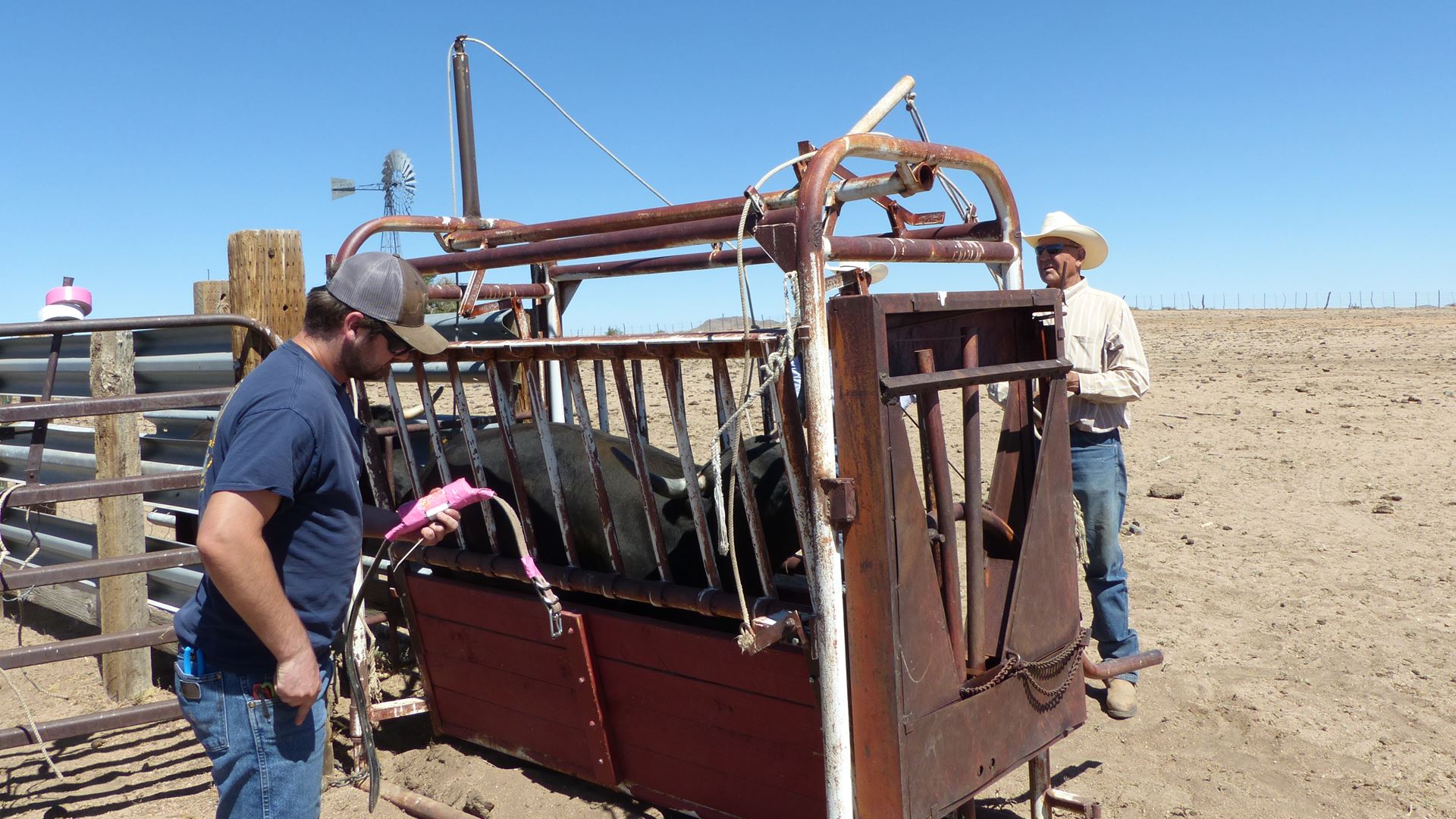When Derek Bailey was a child in southern Colorado, he was intrigued by cattle that would climb the steep slopes on his family’s ranch while all the other cattle grazed below.
“It was steep, mountainous terrain, so cows were down in the bottoms and overgrazed it. But there were always ones that found their way up,” Bailey said. “My dad would be mad because we had to go get them. But I thought those cattle were great – adventurous, fat and happy – and grazing on a ton of grasses.”
As a professor of range science in New Mexico State University’s College of Agricultural, Consumer and Environmental Sciences, Bailey investigates the behavior of cows, including how to keep cows sustainably grazing throughout the country.
Since 2017, Bailey and his research team have used technologies, including GPS, to monitor animal welfare at the Deep Well Ranch in Yavapai County, Arizona, thanks to the support of the Harold James Family Trust.
“They’re tickled that we’re doing this high-tech research because it has real benefits to ranchers, and it helps with their ranch’s sustainability,” he said. “My whole research focuses on ways to manipulate cattle to avoid overgrazing in sensitive areas – like riparian areas and streams – and utilize the steeper, rougher country that cattle typically avoid so they can spread out and take advantage of the forage.”
Bailey and his research team use GPS tracking and accelerometers to monitor cattle activity and changes in normal behavior.
“Like a Fitbit for cows,” he explained.
The team then combs through the data and develops algorithms and techniques to move cattle to undergrazed areas and detect animal diseases or other welfare concerns.
“Cows normally have a pattern,” Bailey said. “They go in and get a drink and then walk off and lay down. But if they stay there, they’re waiting for the water, (and) they’re frustrated for some reason. Since I grew up on a ranch, I know that if you see cattle gathered together next to a water tank, it’s not a good sign.”
Research at Deep Well Ranch has demonstrated that tracking cattle with GPS receivers could identify water system failures.
“With the technology, even with wide distances, ranchers could see the same behavior with real-time tracking and software that could say something’s wrong by sending a text or email message to the rancher,” he said.
Monitoring livestock on horseback is labor intensive and challenging, Bailey added.
“It’s hard to monitor cattle and sheep on rangelands; it’s such a large distance. There are lots of times you won’t see them,” he said. “By remotely monitoring for their health and well-being, it helps ranchers treat livestock sooner, improve productivity and lower labor costs.”
In addition to his work in Arizona, Bailey has also conducted collaborative research in Australia and found that monitoring behavior with accelerometers could detect diseases like bovine ephemeral fever.
For Bailey, his research goes back to the individualistic nature of cows he witnessed when he was younger and the lingering question: Why would some cows have the ability to climb through more arid terrain to find food, and others won’t?
“Genetic selection may be a powerful tool to resolve grazing distribution concerns if we can identify and verify the genes that cause some cows to keep going and others to stay in one area,” he said.
A version of this story first published in the fall 2021 issue of ACES Magazine. To read the issue, visit https://bit.ly/3qeSbuj.

